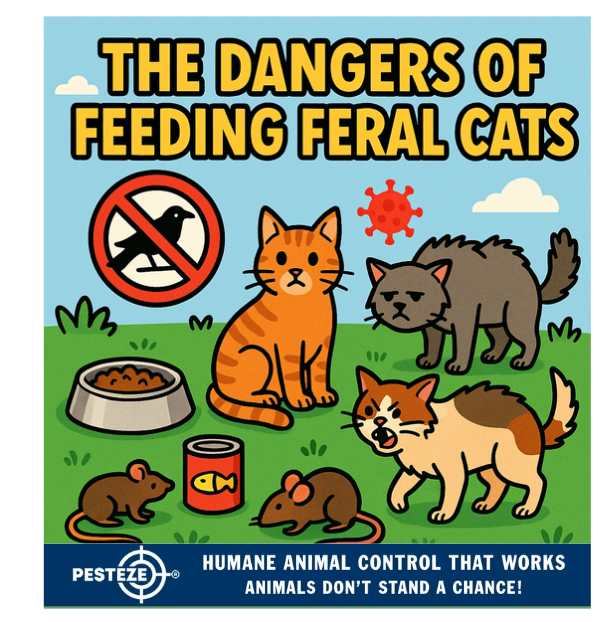THE DANGERS OF FEEDING FERAL CATS

THE DANGERS OF FEEDING FERAL CATS
SUMMARY
This guide explains the hidden risks of feeding feral cats, including public health concerns, overpopulation, and ecosystem disruption. It offers safer, more responsible ways to support community cats through humane management and prevention programs.
FEATURES
-
Disease Transmission: Feeding sites can spread parasites and diseases.
-
Overpopulation: Regular feeding increases breeding rates.
-
Wildlife Impact: Feral cats hunt and harm native bird and small mammal populations.
-
Environmental Damage: Waste and leftover food attract pests.
-
Behavioral Issues: Feeding encourages dependency and territorial aggression.
-
Humane Alternatives: Trap-Neuter-Return (TNR) programs stabilize populations safely.
GUIDE DESCRIPTION
Feeding feral cats may feel compassionate, but it can lead to unintended harm for both the cats and the environment. While providing food offers temporary relief, it often encourages overpopulation, disease transmission, and environmental disruption — problems that affect entire communities.
Feral cats are not socialized to humans and live independently outdoors, often forming colonies near food sources. When people feed them without additional management, their populations can quickly grow. A single female cat can produce multiple litters per year, and without intervention, this leads to overcrowded colonies and increased suffering. More cats mean more competition for limited resources, resulting in malnutrition and aggressive behavior within colonies.
One of the most significant concerns associated with feeding feral cats is disease spread. Cats that live outdoors are more likely to carry parasites, fleas, and infectious diseases like toxoplasmosis, rabies, and feline leukemia virus (FeLV). Feeding areas where multiple cats gather can become hotspots for disease transmission. Additionally, leftover food attracts other pests such as rats, raccoons, and insects, which can further threaten human and animal health.
Feeding feral cats also disrupts local ecosystems. Even well-fed cats continue to hunt instinctively, killing songbirds, small mammals, and reptiles. Studies have shown that feral cats are one of the leading causes of bird population decline in urban and suburban environments. Their presence can unbalance entire ecosystems, harming native wildlife that plays crucial roles in pest control and seed dispersal.
The most effective and humane approach to helping feral cats is participation in Trap-Neuter-Return (TNR) programs. These initiatives involve trapping feral cats, spaying or neutering them, vaccinating them, and returning them to their original habitat. This method prevents reproduction while allowing the cats to live out their natural lives without expanding the population. Over time, colonies become smaller and healthier, and nuisance behaviors such as fighting and spraying decrease.
For those who wish to support community cats responsibly, consider volunteering with local animal rescue groups or donating to TNR programs. Education and prevention are key — by addressing root causes rather than symptoms, we can protect both the cats and the ecosystem they inhabit.
- Saneeth Thota


Comments 0